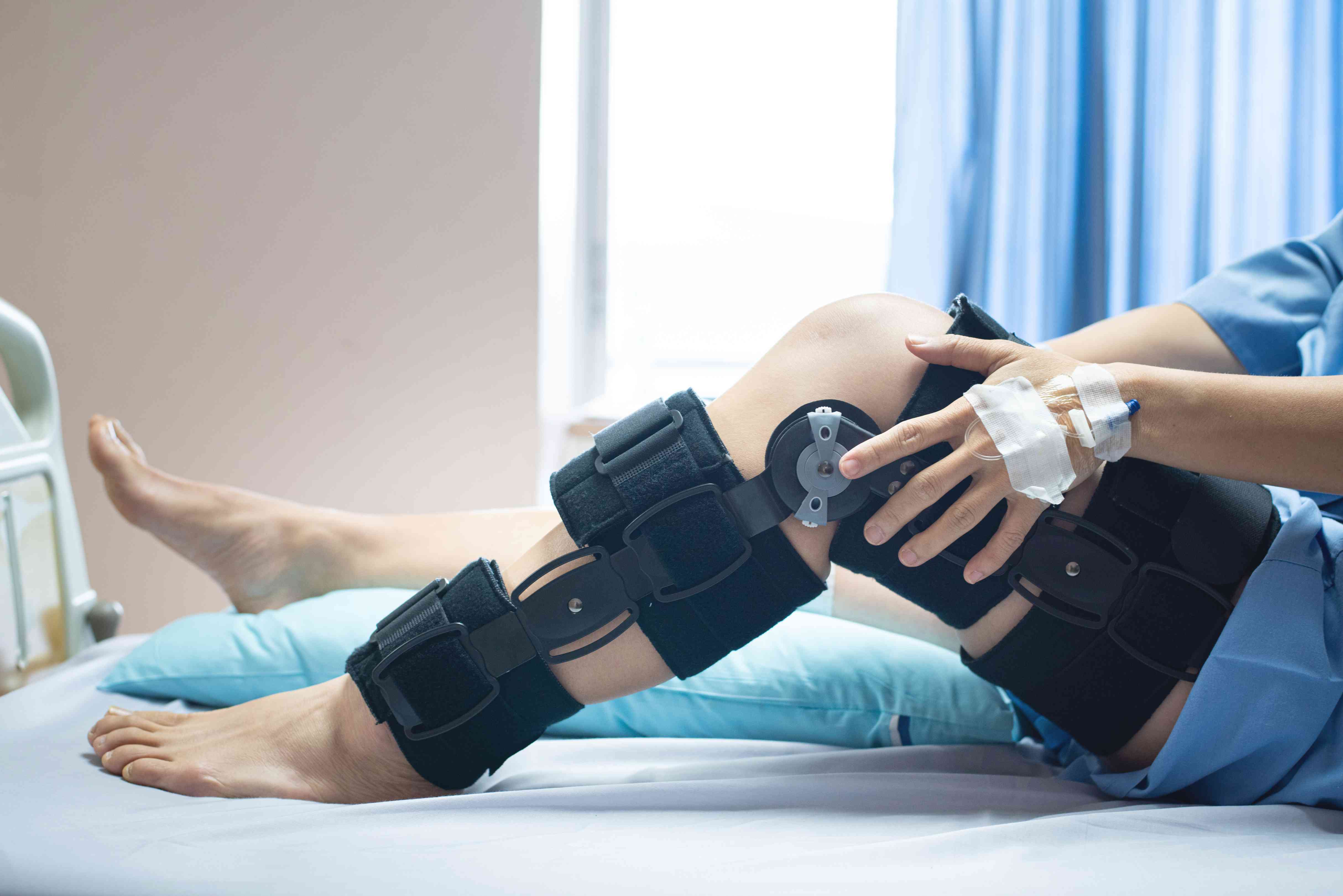ആർട്ടിഫിഷ്യൽ ഇന്റലിജൻസും തോൾ ശസ്ത്രക്രിയയും
നിലമ്പൂരിലെ ഫിലോമിന എന്റെ അടുക്കൽ വരുന്നത് വർഷങ്ങളായി വലത് കൈക്കുള്ള തോൾ വേദനയുമായാണ്. പരിശോധനയിൽ തേയ്മാനമാണെന്ന് കണ്ടെത്തി. അതിന് മരുന്ന് കൊടുത്തു. എക്സൈസുകൾ പറഞ്ഞുകൊടുത്തു. എന്നിട്ടും വേദന മാറുന്നില്ല. പിന്നീ ട് എം.ആർ.ഐയും മറ്റും എടുത്തുള്ള പരിശോധനയിൽ തോൾകുഴയിലെ കഫ് പോയിട്ടുണ്ട് എന്ന് കണ്ടെത്തി. നല്ല തേയ്മാനവുമുണ്ട്. അതിനാൽ സന്ധിമാറ്റിവെക്കൽ ശസ്തക്രിയ വേ ണ്ടിവരും. അങ്ങനെ എം ആർ.ഐയും സി.ട്ടി സ്കാനും എ.ഐയിലിട്ട് എല്ല് എത്രത്തോളം തേഞ്ഞുപോയിട്ടുണ്ടെന്നും അതിന്റെ ഘടനകൾക്ക് എത്രത്തോളം വ്യത്യാസം വന്നിട്ടുണ്ടെന്നും കണ്ടെത്തി അതിൽ എത്രയൊക്കെ സൈസ് ഇംപ്ലാന്റ്റ് ഉപയോഗിക്കണം എന്ന് നോക്കി. പിന്നീട് സർജറി ചെയ്തു. ഏതാനും ദിവസങ്ങൾക്കുള്ളിൽ വിശ്രമത്തിനുശേഷം അവർ പഴയ അവസ്ഥയിൽ എത്തിച്ചേരുകയും ചെയ്തു.
ആരോഗ്യമേഖലയിൽ, പ്രത്യേകിച്ച് ശസ്ത്രക്രിയകളിൽ, ആർട്ടിഫിഷ്യൽ ഇൻ്റലിജൻസിന്റെ സ്വാധീനം ദിനംപ്രതി വർധിച്ചുകൊണ്ടിരിക്കുകയാണ്. ഓർത്തോപീഡിക്സറ്റ് അടക്കമുള്ള വിവിധ മെഡിക്കൽ മേഖലകളിൽ എ.ഐ നന്നായി സ്വാധീനം ചെലുത്തുന്നുണ്ട്. തോൾ കുഴ. മുട്ട് എടുപ്പ് എന്നിവയിലാണ് ഓർത്തോയിൽ റോബോട്ടിക്സും എ.ഐയും മെഷീൻ ലേണിങ്ങും വന്നുകൊണ്ടിരിക്കുന്നത്. ഈ മുന്ന് സ്ഥലത്തേക്കും ജോയിന്റ്റ് സ്പെസിഫിക് ഇംപ്ലാന്റ്റ് ആണ് നടക്കുന്നത്. അത് പ്രധാനമായും മാറ്റിവെക്കൽ ശസ്ത്രക്രിയയിലാണ്. ഓർത്തോപീഡിക് സർജറിയുടെ ഒരു ഉപസ്പെഷാലിറ്റി യായ ഷോൾഡർ സർജറിയിൽ രോഗനിർണയം, ശസ്ത്രക്രിയ ആസൂത്രണം, ശസ്തക്രിയക്ക് ശേഷമുള്ള പിന്തുണ, ശസ്ത്രക്രിയാനന്തര പരിചരണം എന്നിവ മെച്ചപ്പെടുത്തുന്നതിലൂടെ ക്ലിനിക്കൽ പ്രാക്ടിസിൽ എ.ഐ കൂടുതലായി ഉപയോഗിക്കപ്പെടുന്നു. സങ്കീർണമായ തോൾ കുഴ ശസ്ത്രക്രിയകളിൽ എ.ഐയുടെ പ്രയോഗം രോഗികൾക്ക് കൂടുതൽ കൃത്യതയും വേഗത്തി ലുള്ള രോഗമുക്തിയും നൽകുന്നു. തോൾകുഴ മാറ്റിവെക്കുമ്പോൾ എല്ല് വെട്ടിയെടുക്കാൻ വേണ്ട കൃത്യമായ അളവിൽ ജിഗ് (അച്ച്) ഉണ്ടാക്കാൻ സിടി സ്കാനിനും മറ്റും എ.ഐ സപ്പോർട്ട് ചെയ്യുന്നു.
തോൾ ശസ്ത്രക്രിയ:
ശരീരത്തിലെ ഏറ്റവും സങ്കീർണവും ചലനക്ഷ മതയുമുള്ള സന്ധികളിലൊന്നാണ് തോൾസന്ധി പരിക്ക്, വാതം, മറ്റ് രോഗങ്ങൾ എന്നിവ കാരണം തോളിൽ വേദന, ചലനശേഷി കുറവ്, ബലഹീനത എന്നിവ ഉണ്ടാവാം. ഈ അവസ്ഥകളിൽ, ശസ്ത്രക്രിയ ഒരു ചികിത്സാ മാർഗമായി മാറാറുണ്ട്. റോട്ടേറ്റർ കഫ്റിപ്പയർ, ഷോൾഡർ റീപ്ലേസ്മെന്റ്, ആർത്രോസ്കോപ്പിക് സർജറികൾ തുടങ്ങിയവ തോൾ ശസ്ത്രക്രിയകളിൽ ഉൾപ്പെടുന്നു.
എ.ഐയും മെഷീൻ ലേണിങ്ങും തോൾ ശസ്ത്രക്രിയയുടെ എല്ലാ ഘട്ടങ്ങളിലും വിപ്ലവകര മായ മാറ്റങ്ങൾ കൊണ്ടുവരുന്നുണ്ട്.
ഇമേജ് വിശകലനം (Image Analysis):
എം ആർ.ഐ, സി.ടി സ്കാനുകൾ, എക്സ്റേ ചിത്ര ങ്ങൾ എന്നിവ വിശകലനം ചെയ്യാൻ എ.ഐ അൽഗോരിതങ്ങളാണ് ഉപയോഗിക്കുന്നത്. ഇത് ചെറിയ തകരാറുകൾ, എല്ലുകളിലെ മാറ്റങ്ങൾ, റോട്ടേറ്റർ കഫ് ടിയറുകൾ എന്നിവ കൂടുതൽ കൃത്യമായി കണ്ടെത്താൻ സഹായിക്കുന്നു. എ.ഐ ഉപയോഗിച്ച് രോഗിയുടെ തോളെല്ലിന്റെയും സന്ധിയുടെയും ത്രീഡി മോഡലുകൾ നിർമിക്കാൻ സാധിക്കും ഇത് ശസ്ത്രക്രിയക്ക് മുമ്പ് സങ്കീർണമായ കേസുകൾ ആസൂത്രണം ചെയ്യാനും ഇംപ്ലാന്റുകളുടെ വലുപ്പവും സ്ഥാനവും കൃത്യമായി നിർണയിക്കാനും സർജന്കൂട്ടാകുന്നു. പ്രവചനാത്മക വിശകലനം (Predictive Analytica രോഗിയുടെ മുൻകാല മെഡിക്കൽ ഡേറ്റ, ജീവിതശൈലി, ജനിതക ഘടകങ്ങൾ എന്നിവ വിശകലനം ചെയ്ത് ശസ്ത്രക്രിയയുടെ ഫലങ്ങൾ പ്രവചിക്കാനും സങ്കീർണതകൾ മുൻകൂട്ടി കാണാനും എ.ഐക്കാകുന്നുണ്ട്.
റോബോട്ടിക് സർജറിയിൽ (Robotic Surgery)
റോബോട്ടുകൾ എ.ഐ അരിഗോരി തങ്ങളെ അടിസ്ഥാനമാക്കി പ്രവർത്തിക്കു ന്നു റോബോട്ടിക് കൈകൾ ഉപയോഗിച്ച് വളരെ കൃത്യതയോടെയും സ്ഥിരതയോടെയും ശസ്ത്രക്രിയ നടത്താൻ കഴിയും. ഇത് മനുഷ്യന്റെ കൈകൾക്ക് എത്താൻ കഴിയാത്തത്ര സൂക്ഷമായ ഭാഗങ്ങളിൽപോലും ശസ്ത്രക്രിയ നടത്താൻ സഹായിക്കുന്നു. ശസ്ത്രക്രിയക്കിടെ തത്സമയ ചിത്രങ്ങളും ത്രീഡി മോഡലുകളും ഉപയോഗിച്ച് സർജൻമാർക്ക് കൃത്യമായ മാർഗം നിർദേശിക്കാൻ എ.ഐ അധിഷ്ടിത നാവിഗേഷൻ സിസ്റ്റങ്ങൾ സഹായിക്കുന്നു. ഇത് തെറ്റുകൾ കുറക്കാനും ശസ്ത്രക്രിയയുടെ കൃത്യത വർധിപ്പി ക്കാനും ഇടയാക്കും.
എ.ഐ ഉള്ള ശസ്ത്രക്രിയാ ഉപകരണങ്ങൾ സർജന്മാർക്ക് ഡേറ്റയധിഷ്ടിത വിവരങ്ങൾ നൽകുകയും തത്സമയ സഹായം നൽകുകയും ചെയ്യും. എ.ഐ ഉപയോഗിച്ച് രോഗിയുടെ രോഗമുക്തി, പുരോഗതി നിരീക്ഷിക്കാനും വ്യായാമങ്ങൾ നിർദേശിക്കാനും ആവശ്യമെങ്കിൽ ചി കിത്സാപദ്ധതിയിൽ മാറ്റങ്ങൾ വരുത്താനും സാധിക്കും. എ.ഐമൂലം ഓരോ രോഗിയുടെ യും ആരോഗ്യസ്ഥിതിയും രോഗമുക്തിയുടെ വേഗതയും വിലയിരുത്തി വ്യക്തിഗത ചികിത്സാ പദ്ധതികൾ തയാറാക്കാൻ കഴിയും. ശസ്ത്രക്രിയക്കുശേഷം ഉണ്ടാകാൻ സാധ്യതയു 2 സങ്കീർണതകൾ (ഉദാഹരണത്തിന്, അണുബാധ) മുൻകുട്ടി പ്രവചിക്കാൻ എ.ഐക്ക് കഴിയും. എ.ഐയുടെ സഹായത്തോടെ ശസ്ത്രക്രിയകൾ കൂടുതൽ കൃത്യവും സൂക്ഷ്മവു മാവുന്നു. ഇത് ശസ്ത്രക്രിയയുടെ വിജയസാധ്യത വർധിപ്പിക്കും തെറ്റുകൾ കുറക്കാൻ എ ഐ സഹായിക്കുന്നതിനാൽ ശസ്ത്രക്രിയാനന്ത രസങ്കീർണതകൾക്കുള്ള സാധ്യത കുറയും. കൃത്യമായ ശസ്ത്രക്രിയയും വ്യക്തിഗത രോഗമുക്തി പദ്ധതികളും രോഗികൾക്ക് വേഗത്തിൽ സുഖം പ്രാപിക്കാൻ കാരണമാകുന്നു. ആസുത്രണം, നിർവഹണം എന്നിവയിൽ എ.ഐ യുടെ ഇടപെടൽ സർജൻ്റെ ജോലിഭാരം കൂറക്കുന്നു.
വെല്ലുവിളികൾ
എ.ഐ അധിഷ്ഠിത തോൾശസ്ത്രക്രിയക്ക് ധാരാഉം നേട്ടങ്ങളുണ്ടെങ്കിലും ചില വെല്ലുവിളിക ഇം നിലവിലുണ്ട്. എ.ഐ സാങ്കേതികവിദ്യകളും റോബോട്ട്ക് സംവിധാനങ്ങളും വളരെ ചെലവേറിയതാണ്. മറ്റൊന്ന് ഡേറ്റാ ലഭ്യതയാണ്. എ.ഐ അൽഗോരിതങ്ങളെ പരിശീലിപ്പിക്കാൻ വലിയ അളവിലുള്ളതും ഉയർന്ന നിലവാരമുള്ളതുമായ ഡേറ്റ ആവശ്യമാണ്. എ.ഐ ഉപയോഗിക്കു മ്പോൾ ഉണ്ടാകുന്ന തീരുമാനങ്ങളുടെ ഉത്തര വാദിത്തം, ഡേറ്റാ സ്വകാര്യത തുടങ്ങിയ നൈതിക പ്രശ്നങ്ങൾ പരിഹരിക്കേണ്ടതുണ്ട്.
പരിശീലനം ഡോക്ടർമാർക്കും ശസ്ത്രക്രിയാ വിദഗ്ധർക്കും എ.ഐ അധിഷ്ഠിത സംവി ധാനങ്ങൾ ഉപയോഗിക്കുന്നതിനുള്ള പ്രത്യേക പരിശീലനം ആവശ്യമാണ്. ഭാവിയിൽ എ. ഐ സാങ്കേതികവിദ്യകൾ കൂടുതൽ വികസിച്ച് ചെലവ് കുറയുകയും, എല്ലാവർക്കും ലഭ്യ മാവുകയും ചെയ്യും. വെർച്വൽ റിയാലിറ്റി (VR) ഓഗ്മെന്റഡ് റിയാലിറ്റി (AR) എന്നിവ എ.ഐ യുമായി സംയോജിപ്പിച്ച് ശസ്ത്രക്രിയാ പരിശീലനത്തിലും തത്സമയ ശസ്ത്രക്രിയാ സഹായത്തിലും വലിയ മുന്നേറ്റങ്ങൾ ഉണ്ടാകും. എന്തായാലും ആർട്ടിഫിഷ്യൽ ഇൻ്റലിജൻസ് തോൾ ശസ്ത്രക്രിയയുടെ മുഖച്ചായ മാറ്റിക്കൊണ്ടിരിക്കുകയാണ്. രോഗനിർണയം മുതൽ ശസ്ത്രക്രിയാനന്തര പരിചരണം വരെ എ.ഐ നൽകുന്ന കൃത്യതയും കാര്യക്ഷമതയും രോഗികൾക്ക് മെച്ചപ്പെട്ട ഫലങ്ങൾ നൽകുന്നു. വെല്ലുവിളികൾ നിലനിൽക്കുന്നുണ്ടെങ്കിലും, ഭാവിയിൽ തോൾ ശസ്ത്രക്രിയകളിൽ എ.ഐ നിർണായക പങ്കു വഹിക്കും.


